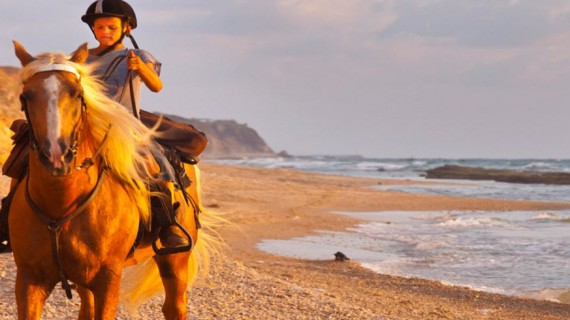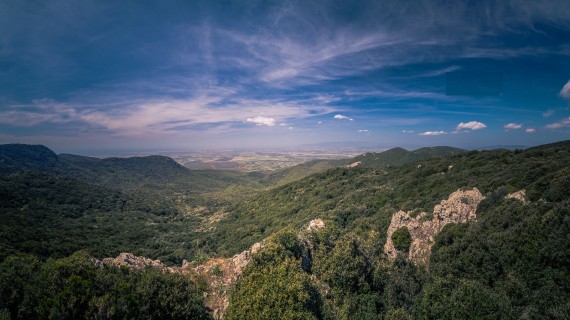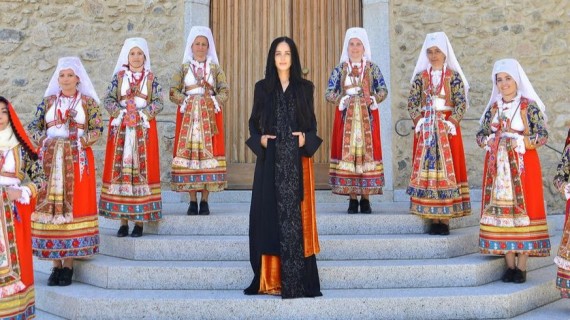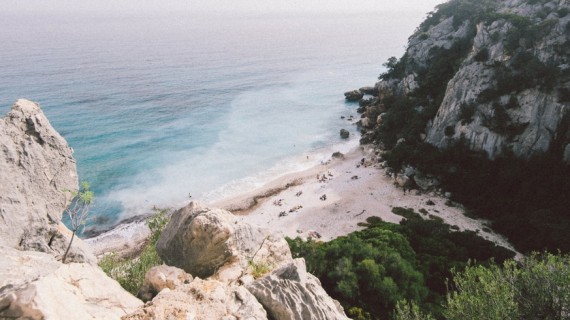Are you looking for a green experience for your next holiday? In the Sardinian hinterland you can discover the hidden beauties of the island, far away from overcrowded destinations.
Sardinia is well known all over the world for its crystal-clear water and the nightlife in Costa Smeralda. Its beauty is evergreen, but overtourism has become a huge problem in the past few years. It is always hard and expensive to find accommodations during the summer. Anyway, if you are a responsible traveller and you want to reduce your carbon footprint on your next vacation, there are some traditional events and historical cities rich in folklore that you really should visit in the Sardinian hinterland. A lesser-known and authentic Sardinia awaits you!
1. The Murals of Orgosolo
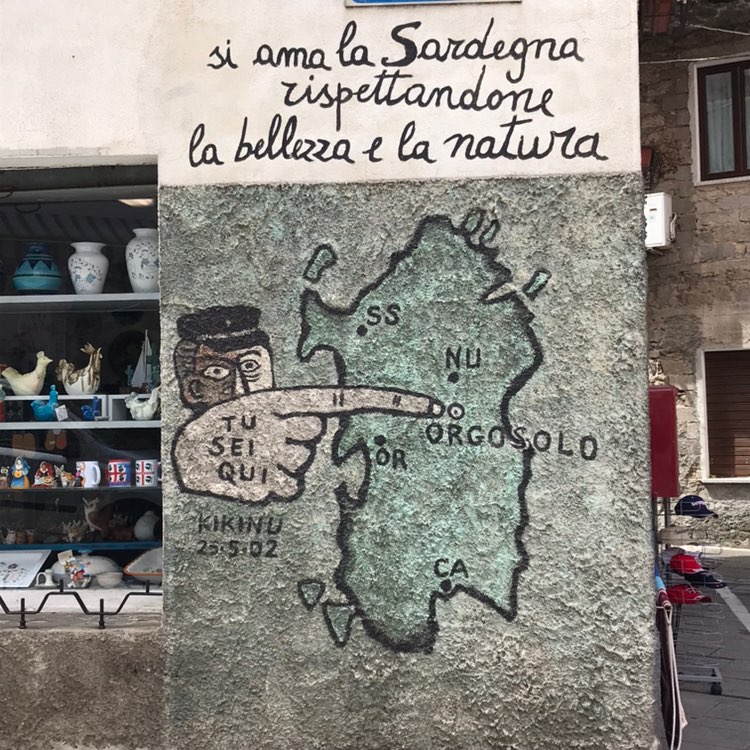
Orgosolo is a picturesque city in the historic region of Barbagia. Approximately 150 murals decorate its streets. They became an original tool of communication and protest in the second half of the twentieth century.
Dioniso, a group of anarchists, signed the first mural in the city in 1969. However, the main artistic figure in Orgosolo is Francesco del Casino, who started painting the murals during the student protests of the 1960s.
The political and social tension of the ’60s and ’70s gave life to collective murals with narrations of the lives of shepherds, of misery and of land disputes.
2. The forest of Montes
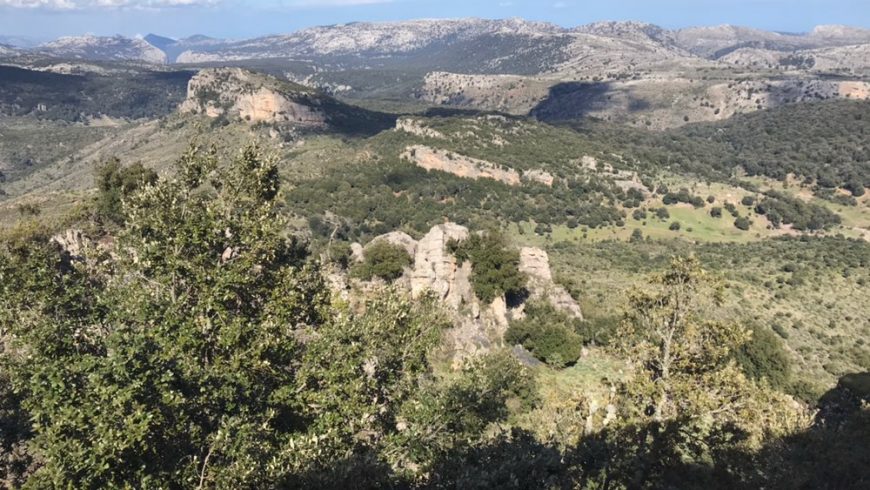
The Sardinian hinterland offers spectacular natural beauties. The forest of Montes, not far from Orgosolo, covers a surface area of 11.332 acres. Walking in the forest, you can admire oaks wood with centuries-old high trunks.
Among Pinnetos (shelters made by the local shepherds with wood and branches) and enchanting vegetation, you will be surrounded by other evidence of the past, such as the Tombs of Giants and the Nuraghe Mereu, built from white limestone rocks.
Besides the oaks wood, the vegetation of the forest is rich in maples, yew trees, hollies, and strawberry trees.
The forest boasts the presence of the mouflon, a mammal which is the symbol of Montes. It is slowly starting to repopulate the island’s mountains. The wild boar is the species with the most numerous population, but there are also other animals like wild cats, dormice, and martens.
A visit to the forest of Montes is ideal for families with children and for trekking and birdwatching lovers!
3. Gorropu Gorge
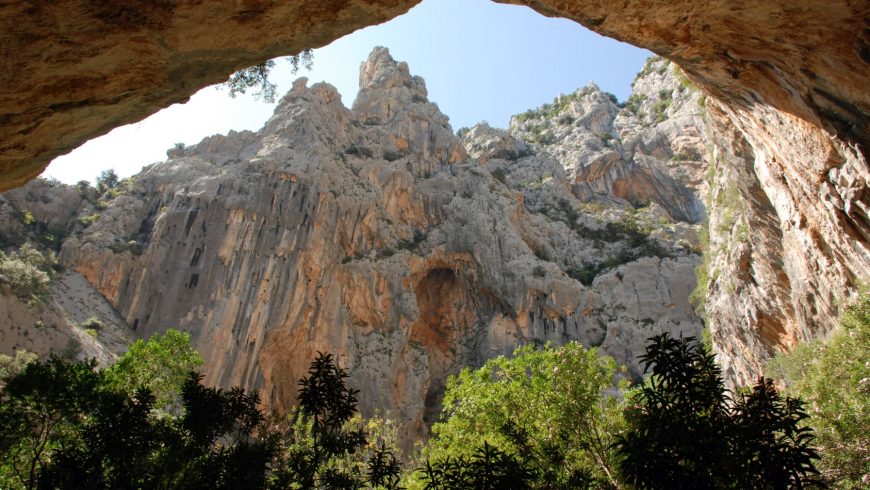
Another surprising fact about Sardinia is that you can find one of the deepest canyons in Europe. The Gorropu Gorge is located in the Supramonte area, between Orgosolo and Urzulei. The Rio Flumineddu rivulet shaped the canyon over time and flows along its bed, at a depth of 500 meters.
You can reach the entrance to the gorge 18 km south of Dorgali by car via a narrow, winding road. From the parking lot in front of the former tollhouse Cantoniera Genna Silana, a seven-kilometre-long hiking trail leads to Gorropu Gorge. The walk takes about 4:30 hours, with an elevation change of 600 meters.
During your hike to the canyon, you will be surrounded by the wildest landscape of the island. The place is rich in flora and fauna and the holly oaks house many nesting sites.
4. Cortes Apertas in the Sardinia Hinterland
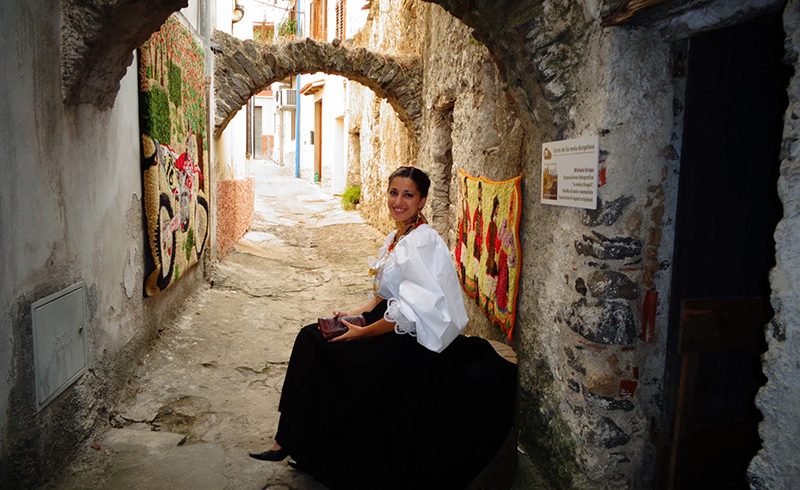
With the beginning of September, there are a series of traditional events throughout the island that involve old arts and crafts.
If you want to get in touch with the authentic traditions of the Sardinian hinterland, you cannot miss Cortes Apertas, a colorful festival that takes place yearly in several cities in Barbagia.
Cortes Apertas literally means open courtyards. During these events, in fact, the locals of each town open the courtyards of the historic houses to the public. The craftsmen illustrate their work and offer homemade wine, liqueur, and beer. In particular, they show the wool processing, threshing, harvesting grain, wood carving, and decoration of ceramics. The women wear traditional hand-sewn costumes.
The first edition of the festival took place in Oliena in 1996. Today, Cortes Apertas is organized in 27 towns in the province of Nuoro on the weekends, from September to December, to celebrate the arrival of autumn.
5. Wine tasting
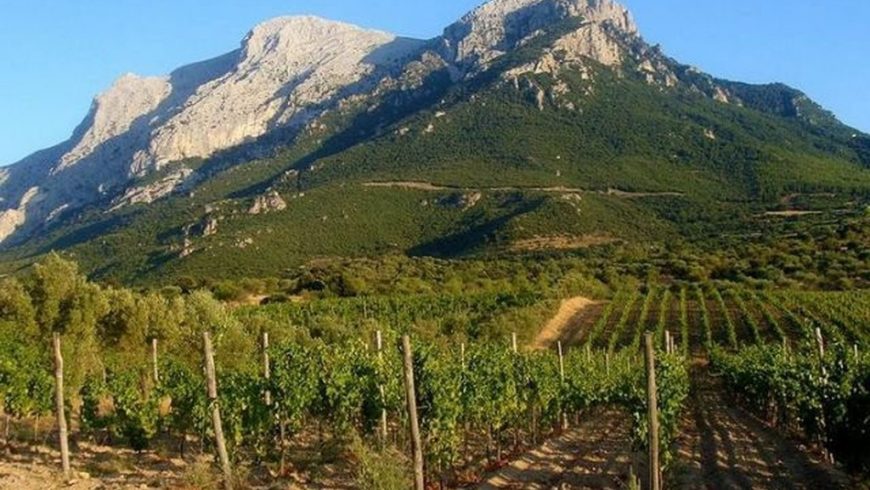
If you are looking for a wine tasting experience, then Oliena is the perfect place to visit. It is a lovely village with wine bars and typical agritourism. There is a wide choice of producers that range from the cheerful Cantina Oliena to some of the most respected viticulturists.
Cannonau is the traditional Sardinian wine. The grape grows all over the island and it is a special variety of the grenache. Other typical wines are Vermentino, Nuragas, and Nasco.
The great majority of the vineyards, and the highest-quality wines, are produced in a triangle that stretches along an idyllic coastline from Orosei to Bari Sardo, and then into the wild mountainous interiors of Atzara. Today, different villages in Sardinia produce wines that have their own special character.
Sardinians have been growing and producing wine since the 16th century when the island was called Insula Vini (wine island).
6. The Banditry Museum, Aggius
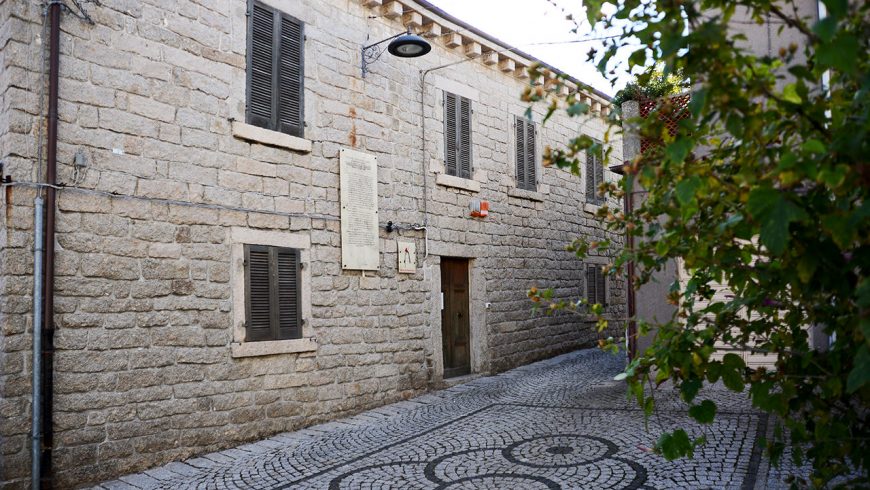
The village of Aggius was the epicenter of the banditry of Gallura region from the middle of the 16th century until the middle of the 19th century. The figure of the bandit was often equated with that of the underdog, fell into disgrace for reasons of honor and therefore worthy of respect and protection.
The Banditry Museum was set up in the palace of old Pretura with the intent of showing the emergence of legality and of public morality. The exhibition takes place in 4 rooms which accommodate nice documentation and traditional objects.
7. Casteldoria Thermal Baths and Spa
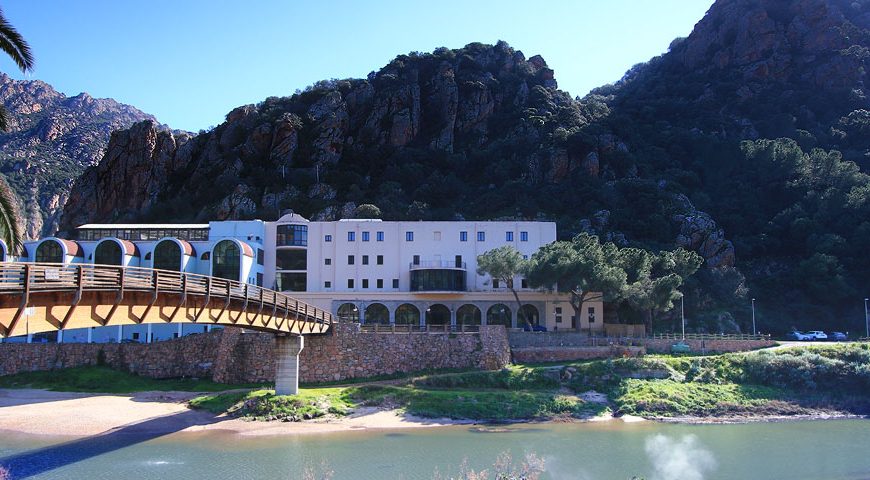
If you want to relax in a quiet place, you really should visit Casteldoria Thermal Baths and Spa, in Santa Maria Coghinas. They are an enchanted setting between lake, mountains, and river.
With water coming from an extinct volcanic source and temperatures from 65 to 78 degrees, you can enjoy thermal baths, mud treatments, and expert massages.
You can also visit the ruins of the 12th century Doria Castle. The legend goes that the castle and the main village were connected through an underground tunnel and the Doria family treasure is still hidden down there.
8. The Cedrino river
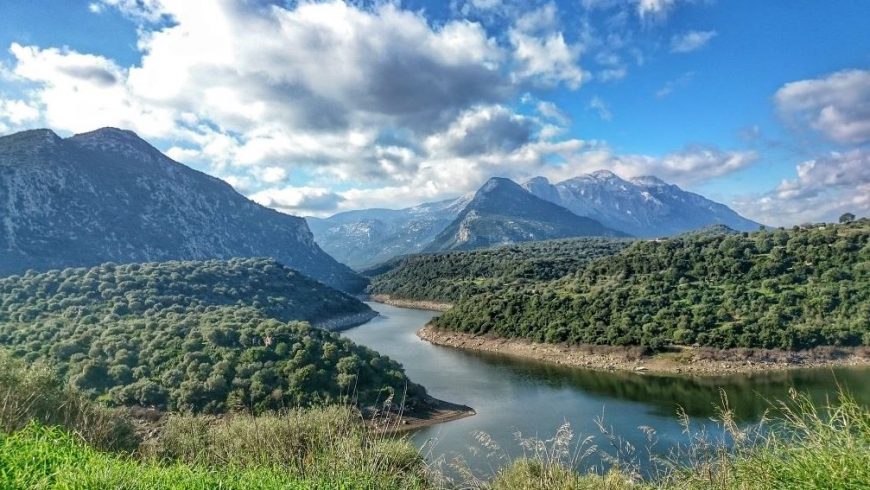
The Cedrino river is one of the major attractions in the Sardinian hinterland and crosses the province of Nuoro. The landscapes along the river are enchanting and the green forests overlook the mirror of the water.
The surrounding valley is a mix of history and archaeology with caves, churches, and millenary refuges still intact over time.
This is the perfect place for excursions by kayak and boat. The first case is ideal for athletic people who prefer to cross the river in total autonomy. In the second case, the excursion is definitely less tiring, and it includes aperitif and lunch.
9. Bitti
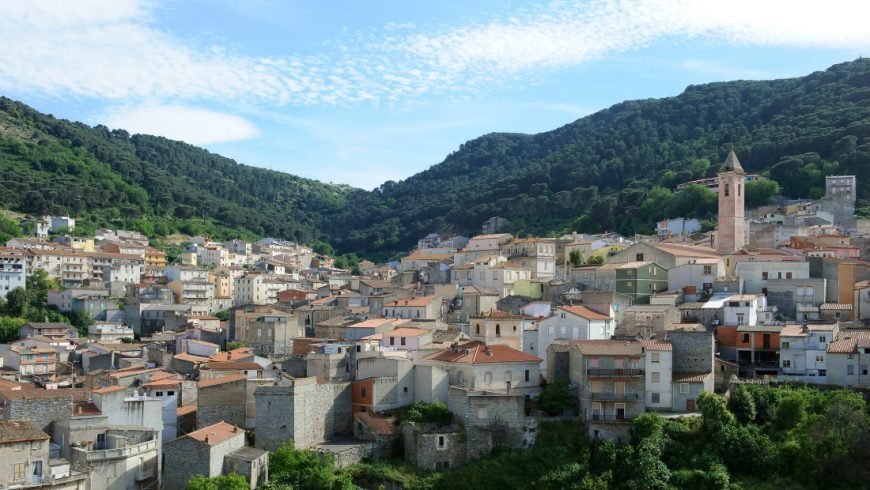
Bitti is the most important town in the northern part of Barbagia. The raising of livestock made this area an important center of dairy production (especially sheep milk products). The ancient village became famous for its traditional polyphonic folk singing. The cultural importance of this type of singing was internationally recognized when the tradition was included in the UNESCO List of Intangible Cultural Heritage.
Bitti has low stone houses and narrow streets that offer stunning panoramic views unchanged over time.
The recent institution of the Tepilora Natural Park and the historic Sos Littos Park – Sas Tumbas make this location perfect for nature and trekking lovers who want to discover the most authentic and untouched side of Sardinia.
10. Montevecchio
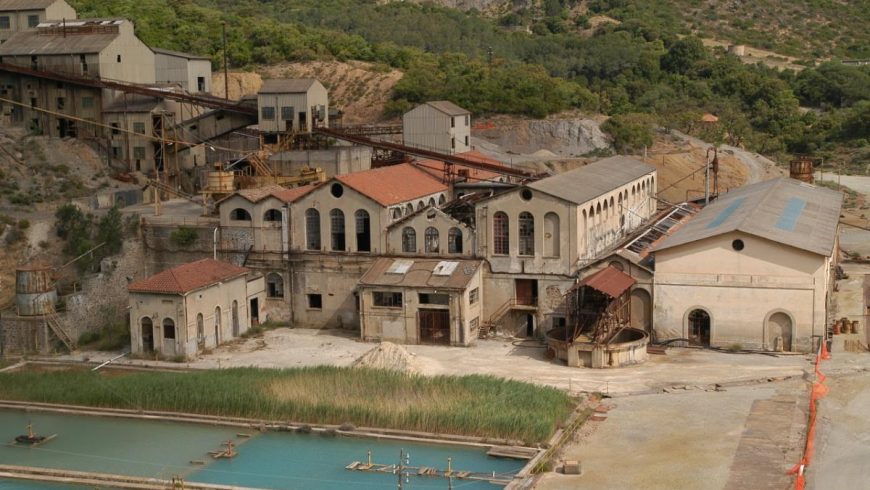
Montevecchio, in the south-west of Sardinian hinterland, is one of the most ancient mining sites in Italy.
The extraction of minerals in the area date back to Phoenician and Roman times. Today, the Geomineral Park of Sardinia, founded in 1989 and supported by UNESCO, preserves the mining sites.
The complex can be explored via 4 different routes.
Would you consider the Sardinian Hinterland as your next green holiday destination now?
Cover image: Photo by Léonard Cotte on Unsplash
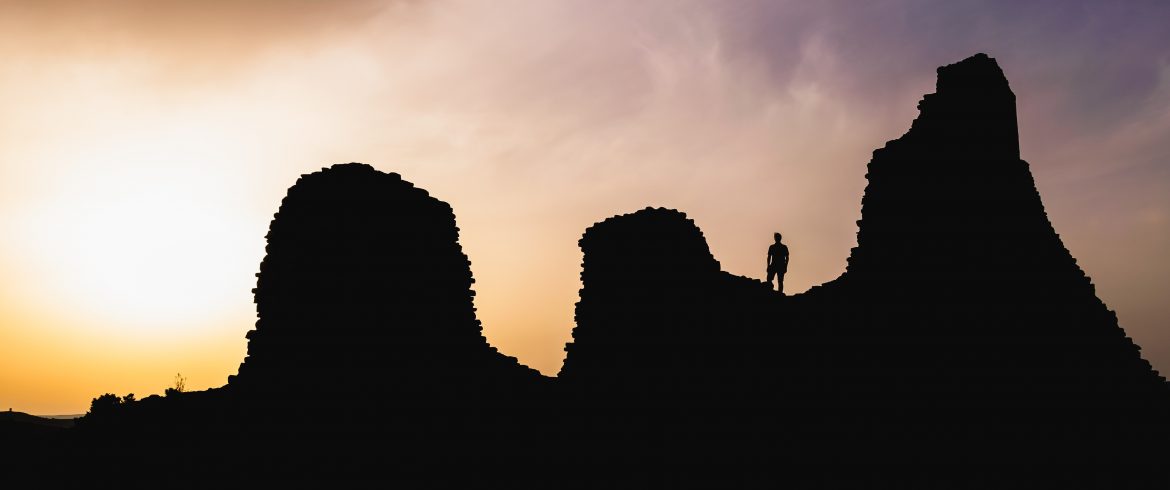
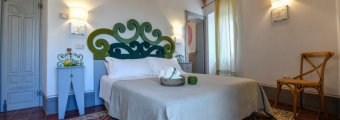 BISOS Ospitalità Diffusa Eco – Green Albergo diffuso in Paulilatino, Oristano, Sardinia, IT
BISOS Ospitalità Diffusa Eco – Green Albergo diffuso in Paulilatino, Oristano, Sardinia, IT 